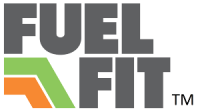 Squatting is a motion that you use in everyday life – bending down to lift a box or a bag off the floor, standing up from a low chair, “squatting” over a dirty toilet bowl. By including squats in your exercise routine, you’ll be thankful that you’ll have the strength and flexibility to handle your daily movement with ease.
Squatting is a motion that you use in everyday life – bending down to lift a box or a bag off the floor, standing up from a low chair, “squatting” over a dirty toilet bowl. By including squats in your exercise routine, you’ll be thankful that you’ll have the strength and flexibility to handle your daily movement with ease.
1) Tone the Legs
All the muscles in your legs, namely the quadriceps, hamstrings and calves are engaged during a squat, resulting in toned and strong legs. Doing a squat with a tempo of 4-0-1 (down 4 counts, 0 count pause and 1 count up) increases the intensity of the exercise.
2) Life the Butt
Your glutes also work hard during a squat, tightening and lifting the butt. To enhance the effect, make sure you go nice and low and push through your heels to get up.
3) Strengthen the Core
The abdominal and back muscles are used to maintain a good balance during the squat movement, resulting in a tighter abdomen and stronger lower back. Always make sure you engage your abdominal muscles by keeping your upper body tight rather than limb throughout the movement.
4) Increase Flexibility
From the ankles to the knees, hips and lower back, multiple joints are utilized in the squat movement. You should maintain proper form to avoid any joint injury.
How to do a proper squat
- Stand with your feet hip width apart.
- Open up your chest.
- Tighten your abdomen.
- Push your butt back and lower your body slowly as if you were going to sit in a chair.
- Make sure your knees are in line with your toes as you do down.
- Pause in the squat position for a count.
- Push off your heels and rise back up to a standing position.
Once you become more competent with doing bodyweight squats, you can increase the intensity by either adding weights or introducing jumps. It’s especially important to maintain proper form when increasing the intensity.
